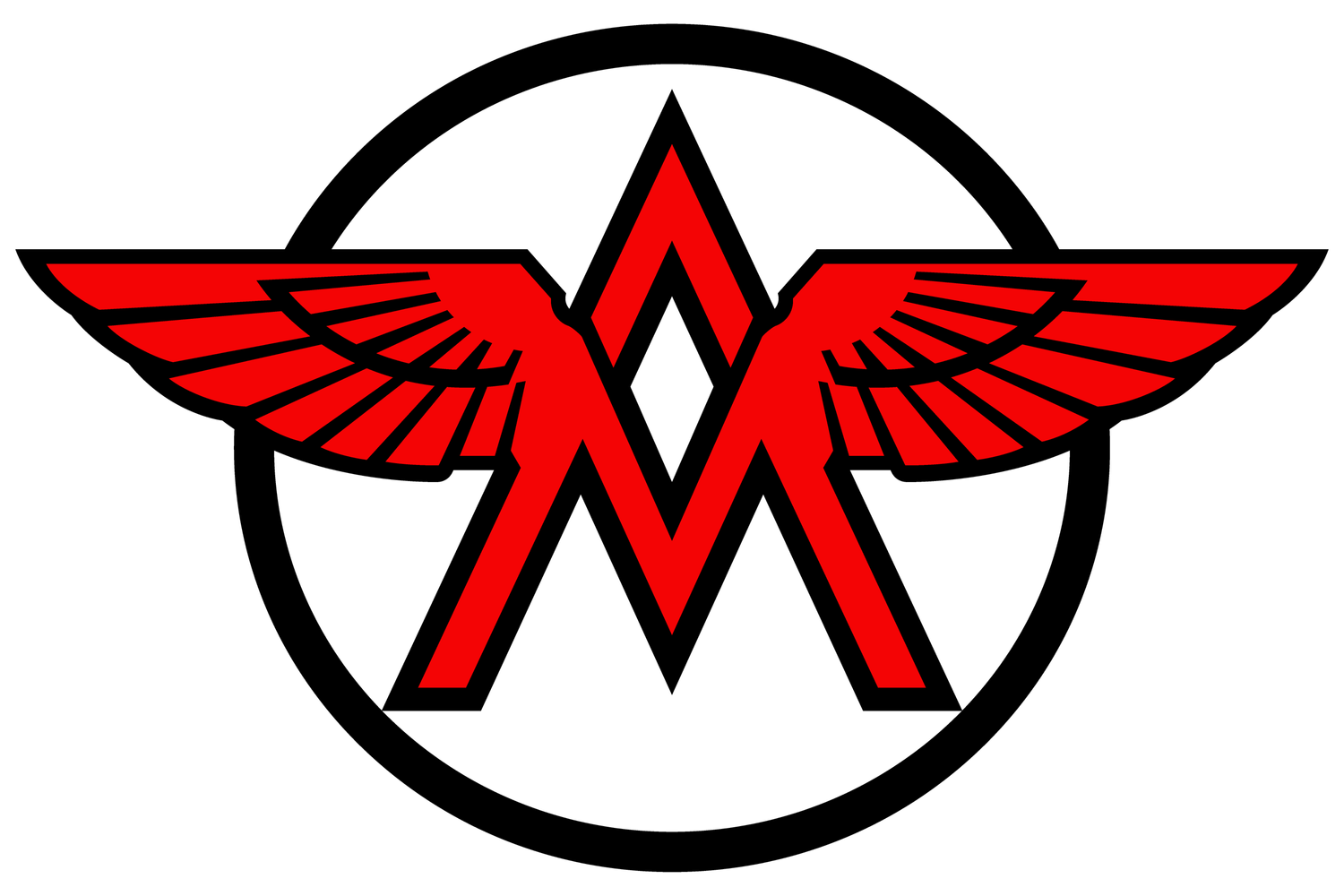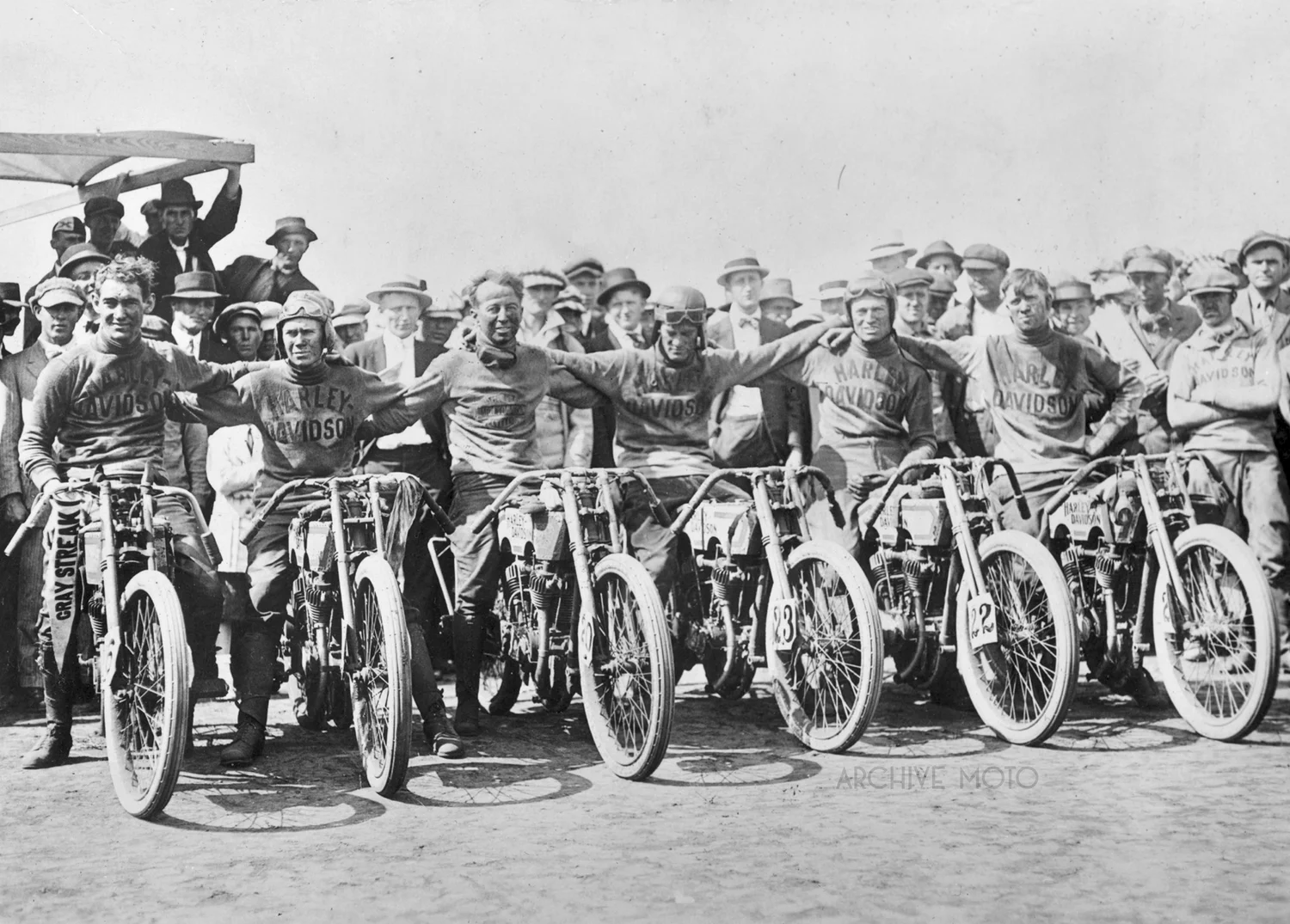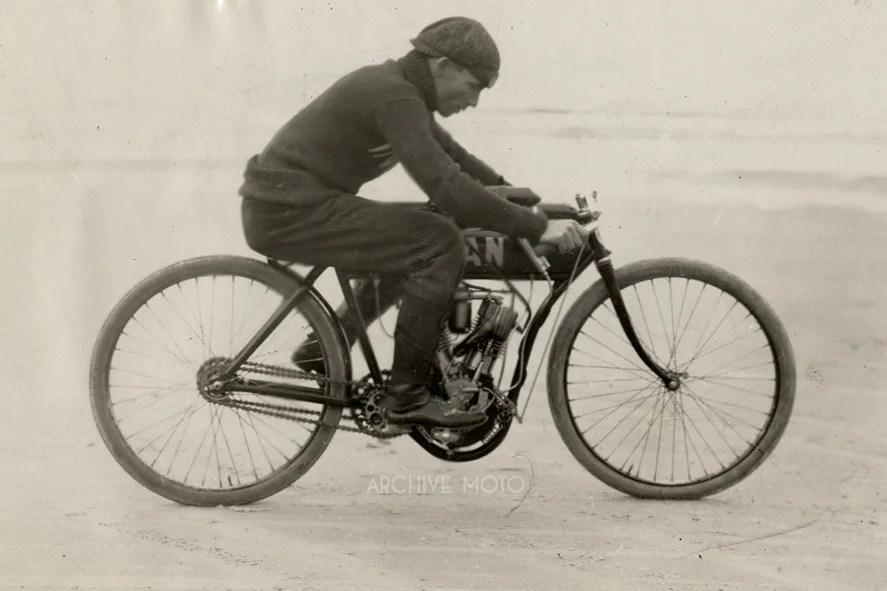This image is one of the few that truly captures the thrilling and raw nature of motordrome racing. It appears from time to time, but as is most often the case with these photographs it is circulated with no background information. Though the image still leaves much to be uncovered, here is the little that I know.
It comes from the sparsely documented Houston Motordrome, which was completed in late December 1913 on the corner of Sampson Street and Pierce Avenue. The Houston Stadium Motordrome was one of the last of its kind, the 21st of the steeply-banked, circular wooden tracks built in America between 1909 and 1914. The 1/4 mile long track was opened on Christmas day in 1913, and though I have yet to confirm how steeply banked the track surface was it appears from this photograph to have been on the steeper side between 50 and 60 degrees.
Judging by the fresh paint dripping down the track surface, the large outer posts that have yet to be trimmed, and the lack of seating around the perimeter this frame was most likely taken during a practice session before the track was complete. I cannot identify the individual riders, but it is most certainly made up of gentlemen racers from the initial line up, many of whom had come from a successful 1913 season racing at the Atlanta and Chattanooga Motordromes. They included Morty Graves, Wilmer “Tex” Richards, Fred Luther, Harry Schwartz, Bert Bouggerman, George Lockner, Ray Creviston, Henry Lewis, F. Fleckenstein, and the former Parisian jockey George Renel.
I have not yet completed my research of the Houston saucer, but it is one of the rare few facilities where racers took flight after having lost control of their machines, sending the man and his machine flying clear out of the arena before coming to a violent landing on the grounds past the grandstands. The first of which was a racer down from Milwaukee named Walter Ferch. During a race on February 8, 1914 he collided with the rear wheel of Bert Bouggerman at 85 mph. He then rocketed over the edge, past the safety wire over the crowd, his machine striking a woman in the head before both Ferch and his machine exited the arena in the least desirable fashion. Ferch, who famously chewed on cigars while racing so as to prevent biting off his own tongue in the event of a crash was initially reported dead, but was later found to be in surprisingly good shape. Just one month later on March 22 Wilmer “Tex' Richards from Waco, who had been one of the favorite champions of the Atlanta drome lost control of his machine during a race and again went sailing over the grandstands, landing hard outside of the motordrome. Tex was found unconscious and bleeding from the mouth, again initial reports claimed his injuries were fatal, but he too walked out of the hospital and back into the saddle, later retiring to Atlanta and becoming apart of the APD motorcycle unit.
The prolific track builder and race promoter Jack Prince sold his interest along with all sanctioning rights to the Houston Motordrome in February of 1914, leaving in order to construct the Twin Cities Stadium in St. Paul, MN. that May, followed by the final of the circular board track motordromes in Omaha, NB in September 1914. The remaining story of the Houston Motordrome, as well as all of the other 20th century cathedrals of violent speed is soon to come.
I received a message last night from a FB friend who happened upon this fantastic photo. This motley crew appears to have served as the rural mail squad from Dexter, Georgia circa 1910. From left to right are Mail carriers G.H. Green, W.P. English, H.I. King, Postmaster, G.F. Shepard and J.T. Register. The tiny town of Dexter, which is located just southeast of Macon has remarkably maintained a population of around 500 people for at least the last 100 years, and the mail route today is most likely much the same as it was in the days of these early motorcycle delivery men. The gents are sporting a fine fleet of Silent Grey Fellows, 1909 or 1910 Harley-Davidson belt-driven single’s as well as what looks to be a Wagner on the far left, each equipped with baskets for their daily deliveries. Postal service, especially in rural areas was one of many early commercial industries in which the utilization of motorcycles was a momentous success. In the case of Birmingham, Alabama’s legendary racing pioneer Gene Walker, the postal routes also offered a perfect opportunity to sharpen one’s racing faculties.
I had a great visit last week to the archive in Springfield, MA. The museum there has way more material than I could chew through in a single trip and I cannot wait to get back. I answered a ton of questions, was able to connect a lot of dots, and I am excited to share what I am finding. I also stopped into the Motorcyclepedia Museum in Newburg, NY to see the insane collection that they have on display. If you have been thinking of making a trip don't wait any longer, it is a remarkable place.
Ray Seymour, another American pioneer motorcycle racer is one of those guys you see often in photos but most know little about. The museum collection in Springfield has some incredible photos of Ray, who joined the Indian roster in 1910 when Reading-Standard decided to pull back from professional racing. The freckle-faced Seymour had been competing since he was a teenager and was a top competitor from the very start. Here, he sits for a photo onboard his factory “Big Base” 8-valve racer during the races at the newly opened Columbus Motordrome in mid July, 1912. Seymour was one of three professionals to enter the race, Indian teammates Eddie Hasha and Morty Graves both piloting powerful Big Base 8-valve machines as well. Seymour took the flag in the 5 mile professional and 5 mile open races, as well as the top spot on the podium for the 10 mile professional event. Tragically, just over a month later Seymour would be leading a race at the Vailsburg Motordrome in newark, NJ when friend and teammate Eddie Hasha lost control resulting in one of the most notorious and catastrophic motorcycle racing accidents in history.
Birmingham, Alabama's Robert Stubbs, dealer and one of Indian's earliest racing stars on the speedy sands of Florida's, Ormond Beach in late March, 1909. He was asked to accompany Indian's chief engineer Carl Oscar Hedstrom along with teammates Walter Goerke and AG Chapple to stretch the new lot of Indian racing machine's to their limits during the annual Carnival of Speed. Each man from the "tribe" reached and broke new records with the exception of Hedstrom, who was reported as being too busy tinkering with his Simplex powered Hot Shot, which had too large a displacement to qualify for any FAM record runs. During a run on Wednesday afternoon Stubbs met and exceeded the limit of his powerful Indian twin racer, and at over 80 mph, undoubtedly the fastest creature on the planet earth at that moment he went over the bars. Stubbs not only came out of the incident unscathed but smiling, an unusual emotional break for a typically stoic man based on all photographic accounts... his machine however was done.





